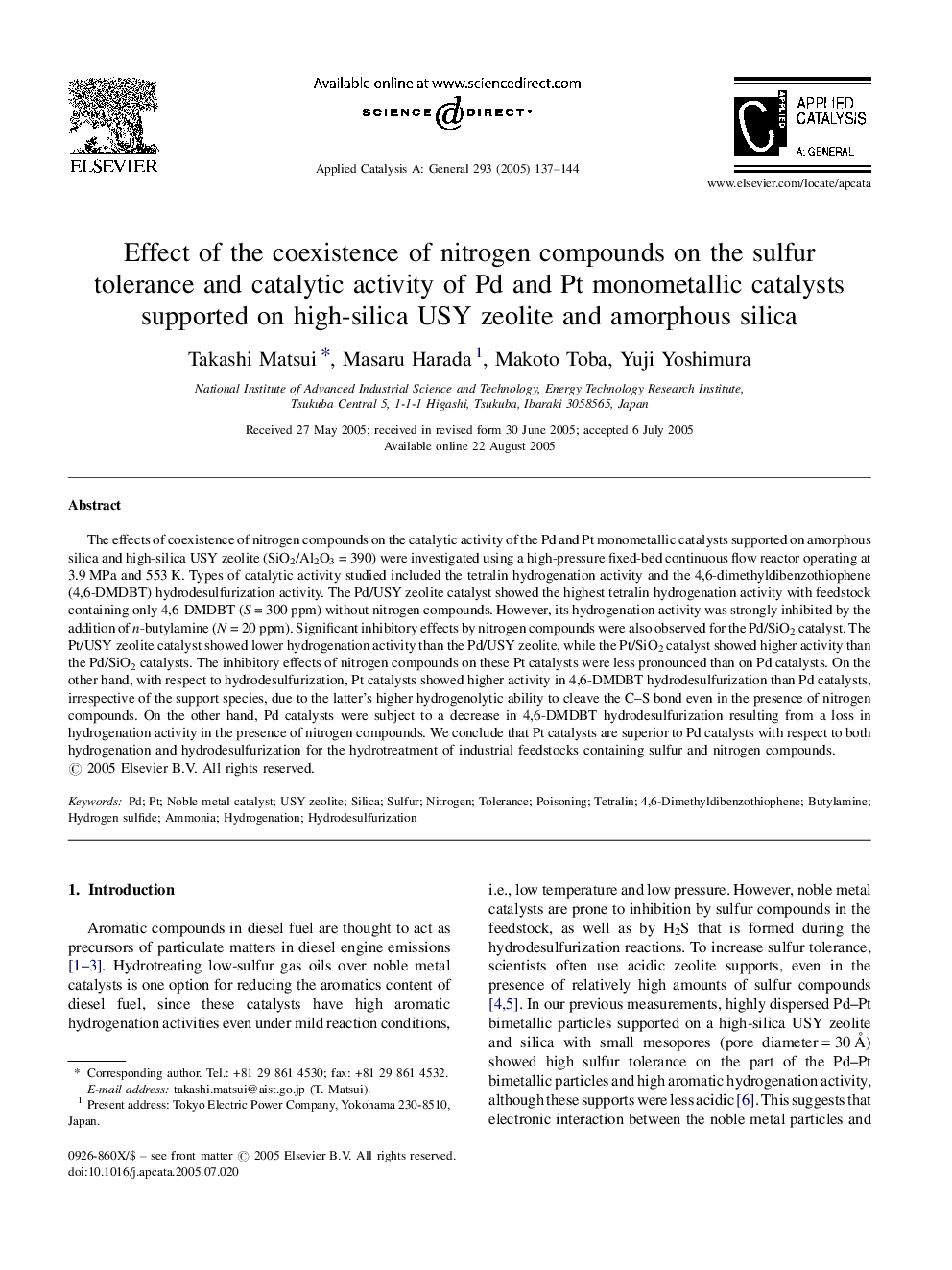| Article ID | Journal | Published Year | Pages | File Type |
|---|---|---|---|---|
| 9607797 | Applied Catalysis A: General | 2005 | 8 Pages |
Abstract
The effects of coexistence of nitrogen compounds on the catalytic activity of the Pd and Pt monometallic catalysts supported on amorphous silica and high-silica USY zeolite (SiO2/Al2O3Â =Â 390) were investigated using a high-pressure fixed-bed continuous flow reactor operating at 3.9Â MPa and 553Â K. Types of catalytic activity studied included the tetralin hydrogenation activity and the 4,6-dimethyldibenzothiophene (4,6-DMDBT) hydrodesulfurization activity. The Pd/USY zeolite catalyst showed the highest tetralin hydrogenation activity with feedstock containing only 4,6-DMDBT (SÂ =Â 300Â ppm) without nitrogen compounds. However, its hydrogenation activity was strongly inhibited by the addition of n-butylamine (NÂ =Â 20Â ppm). Significant inhibitory effects by nitrogen compounds were also observed for the Pd/SiO2 catalyst. The Pt/USY zeolite catalyst showed lower hydrogenation activity than the Pd/USY zeolite, while the Pt/SiO2 catalyst showed higher activity than the Pd/SiO2 catalysts. The inhibitory effects of nitrogen compounds on these Pt catalysts were less pronounced than on Pd catalysts. On the other hand, with respect to hydrodesulfurization, Pt catalysts showed higher activity in 4,6-DMDBT hydrodesulfurization than Pd catalysts, irrespective of the support species, due to the latter's higher hydrogenolytic ability to cleave the CS bond even in the presence of nitrogen compounds. On the other hand, Pd catalysts were subject to a decrease in 4,6-DMDBT hydrodesulfurization resulting from a loss in hydrogenation activity in the presence of nitrogen compounds. We conclude that Pt catalysts are superior to Pd catalysts with respect to both hydrogenation and hydrodesulfurization for the hydrotreatment of industrial feedstocks containing sulfur and nitrogen compounds.
Keywords
Related Topics
Physical Sciences and Engineering
Chemical Engineering
Catalysis
Authors
Takashi Matsui, Masaru Harada, Makoto Toba, Yuji Yoshimura,
